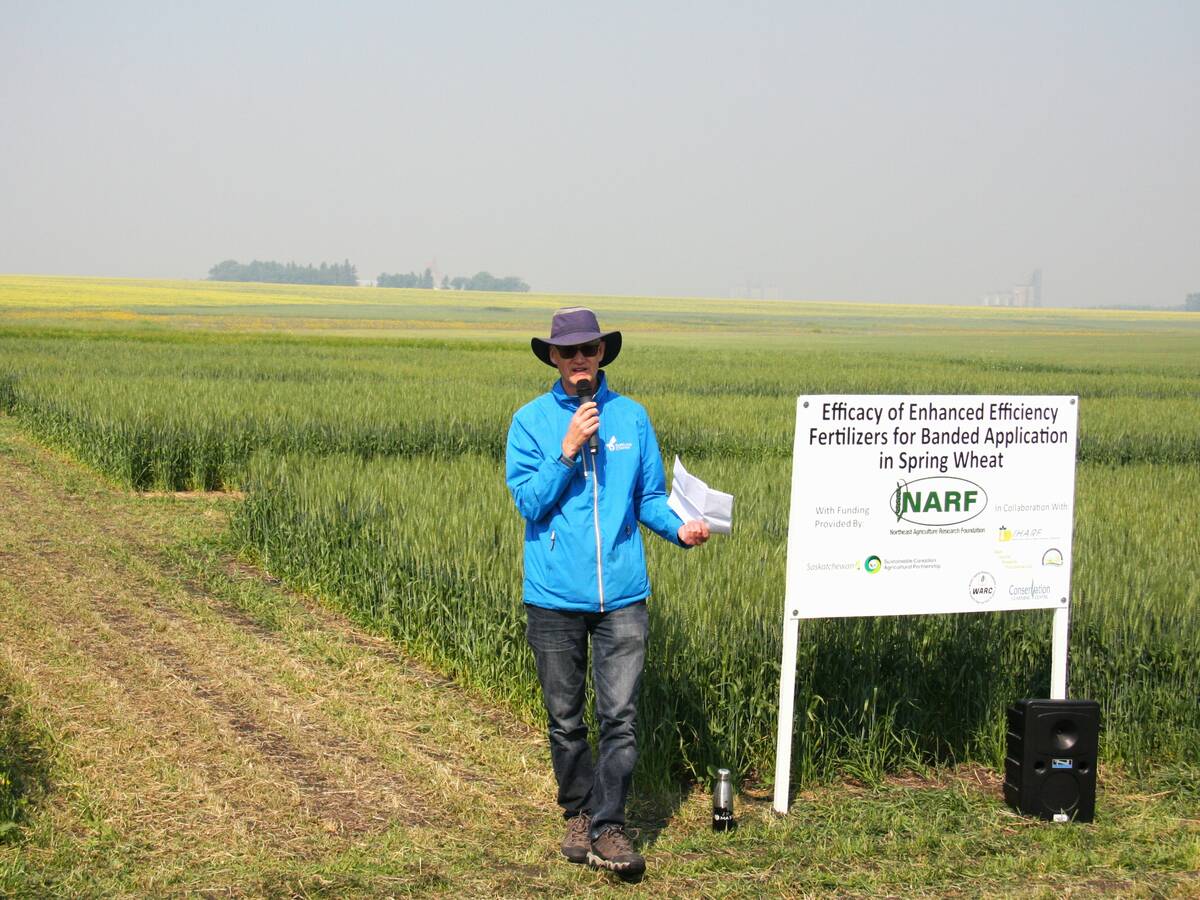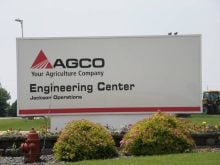Farmers need to understand how tractor tests are conducted to understand how relevant they are to modern agriculture, says John Deere’s marketing manager for its new 8 series tractors.
Chad Hogan, whose company is caught in a debate with Agco and the Nebraska Tractor Test Lab over the interpretation of tractor test results, said the rated power take-off horsepower test connects the tractor to the dyno and pulls it down to the rated engine r.p.m.
“At that point, the percentage of rated p.t.o. power will be 100 percent,” he said.
Read Also

Fertilizer method’s link to emissions studied
A researcher says others studying greenhouse gas emissions aren’t considering how the loss of nitrogen into the atmosphere correlates with fertilizer application or if there is an impact to yield.
“If a tractor has a 20 percent power bulge, then you continue putting on more load beyond the rated power. Now you’re dropping below the rated engine r.p.m.
“When you get to the peak (power bulge) horsepower the tractor can hold and continually produce power, you’re at 120 percent. That’s max power. Now you’re down to 1,600 or 1,700 r.p.m. If you add much more load now, you stall the engine.
“Agco claims to have the most efficient tractors at max power. They decided to quote the max power p.t.o. test because that’s where they look the best, but few customers will ever operate at the point where they pull down to max power.”
Hogan encouraged farmers to study the five main tests: rated engine speed p.t.o., max power drawbar, 75 percent of pull at max power, 75 percent of pull at reduced engine speed and 50 percent of pull at reduced engine speed.
He said that contrary to some opinions, the drawbar load test is significant. The big yellow cart pulled by the tractor is a dyno, or electric generator, driven by the smooth rubber tires rolling across the concrete test track.
As the engineers dial in a heavier load, the dyno creates more electricity and consequently more rolling resistance. Because it’s relatively easy to get an accurate reading on the generation of electricity, the dyno cart creates a good picture of usable horsepower.
Hogan said the drawbar lets the testers put the entire load on the ground through the tractor’s drive train, axles and tires. It’s better than an actual in-field test because the concrete eliminates variables such as soil type, soil moisture and trash cover.
However, it is also more realistic than a stationary p.t.o. test, he added.
“Part of our message is that any test also measures the efficiency of the drive train to some extent.”
“Back when all transmissions and p.t.o. units were similar in all tractor brands, the tests were better at comparing engines.
“But today, there are so many drive train factors that enter the picture. The number of gear ratios through a transmission, from input to output, has a huge affect on overall tractor efficiency. There’s a couple percent loss with each gear mesh you go through.”
He said Deere tractors have more gears in the p.t.o. than most other tractors, thus giving them a disadvantage in p.t.o. tests. However, that isn’t a big deal because of reduced p.t.o. use by farmers.
On the other hand, Hogan said Deere has fewer gear meshes in the drive train than most other tractors, giving it better field efficiency.
Hogan said the Nebraska Tractor Test Lab information that Agco uses in its marketing campaign is misleading.
He said he’s not questioning the integrity of the German Organization for Economic Co-operation and Development test lab, which forwarded its results to Nebraska for public release.
However, he is concerned that the lab tested only one Agco tractor.
“They have four models and three brands. That’s 12 tractors,” he said.
“But if you look at the test results, there’s only one serial number. They tested the same tractor, but just changed the engine control unit.”
Although Roger Hoy at the Nebraska tractor test lab said this practice falls within OECD guidelines, Hogan said John Deere doesn’t like the practice.
“Right now (April 19), we have all the new tracked and wheeled tractors in the 8300 series at Nebraska for testing. We bring one tractor per model.
“Here’s why. A lot of folks believe the difference between one tractor model and the next is just software. That’s not the case at Deere.
“As we go up in horsepower, we change pistons, axles, turbochargers, transmission gears and other things. It’s more than just software that differentiates an 8320R from an 8345R.”
Hogan said Deere also has questions about the diesel consumption on Agco’s SCR tractors. He said the diesel exhaust fuel liquid urea should also be factored in because it does ignite and burns in the combustion chamber.
“You really need to add the urea cost to the diesel cost. The simple thing would be to compute the total fluid horsepower hours per gallon.
“How many gallons of diesel and urea combined does it take to produce a horsepower hour? When you do that equation, we’re better in all five significant tests.”
For more information, visit tractortestlab.unl.edu/testreports.htm or a John Deere dealer.

















